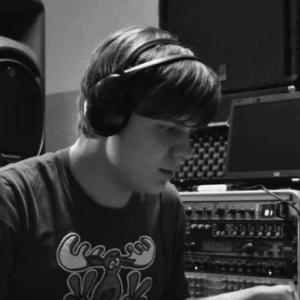
This is the my personal Top-5 of Xfer Serum Presets…

All music is created with the intent to engage the listener. With it, we may awaken memories, transmit feelings and thoughts, and create an atmosphere. However, in order to make music that may have this effect, one needs not just creativity but also some theoretical understanding.
A collection of guidelines and ideas utilized in the creation of music are known as theoretical basics. By mastering these fundamentals, composers may produce works that not only sound good but also stick in listeners’ heads. To write music that will inspire emotion, aspiring musicians, composers, and sound artists must be familiar with this principle.
The fundamental theoretical concepts of music that may be used to produce memorable compositions will be examined in this article. We’ll go through the fundamentals of harmony, melody, and rhythm and dissect the methods employed by professional musicians and sound designers to produce music that will live on in the annals of time.
Among the key components of music is rhythm. It gives the impression of motion, pace, and pulsation. Music has a variety of rhythms, including melodic, harmonic, and rhythmic.
The notes’ varying lengths and the pauses in between them make up melodic rhythm, which in turn governs the composition’s melody. In music, many moods and emotions are evoked using various melodic rhythms. For instance, a quick and constant rhythm might elicit feelings of excitement and happiness, whereas a slow and slightly chaotic one conjures up feelings of longing and melancholy.
Altering chords, rhythmic patterns, or even just the pace of the music can result in harmonic rhythm. It may be used to produce a variety of effects and emotions, such as heightened tension or melodic progression.
Different beat types are included in rhythmic rhythm. In music, a beat is a unit of time that denotes the quantity of beats in a rhythmic cycle. To produce various rhythmic patterns and effects, many beat types are utilized. For instance, 3/4 may convey a sense of dancing, whereas 4/4 can convey steadiness and assurance.
Unique and enduring compositions are made possible through the utilization of melodic, harmonic, and rhythmic elements. Music conveys a variety of moods and feelings through various combinations of rhythmic components. For musicians and sound designers who want to create tunes that people will remember, rhythm control is a crucial instrument.
Harmony is a term used to describe the vertical component of music, or the simultaneous hearing of several notes. Three or more notes performed together form a chord, which is the fundamental unit of harmony. Different sorts of chords, which can be basic or complicated, are utilized in music to evoke various moods and feelings.
There are numerous harmonies that are frequently employed in music:
In music, chords are utilized to instill a feeling of harmony and balance. They are frequently necessary to construct the harmonic framework of a piece of music or to accompany a melody. Composers and musicians may produce more intriguing and intricate harmonies in their music by understanding the various chord types and how to apply them.
A melody is a horizontal feature of music that consists of a series of distinct notes performed one after another. Melodies are made by combining tonality and scale, which serve as the framework for arranging musical sounds and giving them a feeling of coherence and wholeness.
Tone, which describes the connection between the different notes and chords in a piece of music, relates to the overall sound of the song. Major and minor scales, collections of notes that may be used to generate melodies and harmonies, are the typical basis for major and minor tonality in Western music. A scale is a predetermined set of notes, usually in ascending or descending order, that serve as the building blocks of a song.
A crucial component of songwriting and composing is coming up with a catchy tune. It’s simple to sing or hum along to songs that you can remember. When making them, keep in mind the following essential components:
Composers and songwriters may make memorable and eerie melodies that will connect with listeners by utilizing tone and scale as well as these essential components.
It takes more than simply ability or creativity to write songs that stick in your head. Developing your music to the next level often requires having a strong theoretical foundation. In the section that follows, we’ll look at how to put the theoretical information we discussed before to use in making compositions.
The harmonic base is one of the most important components in the compositional process. These are the chords and chord progressions that serve as a song’s structure.
A solid grasp of music theory is required to lay a harmonic foundation, especially with regard to the idea of harmony and the construction of chords. Seventh and extended chords, major and minor triplets, and other varieties exist, each with a distinct sound and purpose.
It’s crucial to take the composition’s key into account while building a harmonic structure. The scale employed in the piece is described, along with the collection of notes that make up that scale. Thus, it is crucial to select chords that complement this scale. The work becomes more cohesive and melodious as a result.
There are other common chord progressions that are often employed in many musical styles. One common sequence in rock and blues music is I-IV-V, which employs the first, fourth, and fifth chords of the major scale. The ii-V-I sequence is also frequently utilized in jazz pieces.
Finding a balance between complexity and simplicity is a crucial component as well. Too few chord changes will make the song uninteresting and monotonous, while too many will make it tense and overwhelming. A composition’s harmonic base may be made distinctive and intriguing by experimenting with various chord progressions and chord progressions.
The composition’s scale and tone should be determined initially. The harmonic material will be constructed around the tonal center determined by the tone. The scale has an impact on the sonic palette that will be utilized to build the tune.
You may start writing the melody once the tonality and scale have been established. It ought to be melodious and likable. Repetitive themes are one of the secrets to crafting a tune. Throughout a composition, a motif is a brief musical notion that is repeated several times.
Additionally, you may employ a hook—a little melodic or word piece that is simple and quick to remember—to produce a memorable song. Both the chorus and the verse have a hook.
A difficult procedure that takes a lot of effort and attention is developing a hook. It must be succinct, colorful, and memorable. It is created using a variety of methods, such as rhyme, repetition, or themes.
One of the most fascinating components of the music composing process is using sound processing effects. You may customize your sound and add a unique mood to your music by using sound processing effects.
Reverb is one of the most often used effects in sound processing. Reverb gives your sounds additional depth and space, which enhances their naturalness and aural appeal. Other often used effects include delay, chorus, flanger, etc. To accomplish a certain objective in the composition, each of them produces a unique particular effect.
It’s crucial to realize that sound processing effects shouldn’t be employed only to “jam” a song. To improve a song’s sound and provide a certain impact, they are required. The sound might become “artificial” and “unnatural” if sound processing effects are used excessively, which can quickly destroy the song’s impression.
It’s critical to keep in mind that the usage of effects should be moderated to avoid detracting from the composition’s other components, rhythm, harmony, and melody. Every component of the piece has a purpose and occupies a certain location in the sound field.
The correct use of sound processing effects often enhances the composition’s audio quality, gives it more personality, and helps to create the ideal mood. Practice has taught us that for the greatest results, sound engineering and sound processing expertise are essential.
Using theoretical knowledge to produce original compositions, here are some helpful hints for budding musicians, composers, and sound engineers. It’s critical to realize that music is art and that creating a good composition requires a blend of theoretical understanding, intuition, and creative inspiration.
Start off easy is the first helpful suggestion. Start with basic melodies and chords since complicated compositions demand a certain level of expertise and knowledge. You may put what you’ve learned into practice in this manner, then progressively proceed to more difficult pieces.
Try different rhythms as the second piece of advice. It is because of this that music is engaging and unforgettable. Utilize several methods to produce inventive and captivating rhythmic figures.
Utilize diverse sound processing methods as the third piece of advice. An instrument or voice can have its sound altered by sound effects, producing new sounds and feelings. Utilize them to enhance your composition’s tone.
Last but not least, don’t be scared to play around with harmonies and tonalities. To produce a distinctive sound, experiment with uncommon harmonic progressions and chord pairings. Your essay will be more engaging and memorable if you choose this technique.
With the help of this technique, you may get to know several musical genres and develop your ability to recognize and evaluate the creative characteristics of each.
Start by picking a genre that appeals to you and learning about its fundamental components. Examine a few songs from that genre, paying close attention to how the various components of musical composition are employed.
It’s crucial to research well-known performers in the genre you’ve selected. Keep track of the musical components they employ and the arrangements they make when creating their works. Apply what you’ve learned when composing your own works.
Don’t restrict yourself to one course of action. Explore several musical genres to get a more comprehensive grasp of how modern music functions and how to employ various compositional techniques to produce new pieces.
Also keep in mind that music analysis is only the first step in a lengthy journey. You should experiment, try things out, and put what you’ve learnt into practice. You won’t be able to produce vibrant, recognized compositions that will go down in history until that point.
A key component of the process of making music is using intuition and imaginative creativity. With the help of these attributes, the musician may give his or her creations a distinctive personality. But it’s important to realize that theoretical knowledge must be weighed against creativity and imagination. The only way to produce genuinely excellent and expert music is in this manner.
You must continually explore and attempt new things if you want to use your intuition and creative imagination when making music. You may begin by making little adjustments, such as swapping out a couple chords in a harmonic progression or including a novel rhythmic element in your work. The music of other composers might also serve as inspiration for you as you search for creative ideas and arrangements.
It’s important to keep in mind that not all experiments and concepts will work. As a result, it’s crucial to have the ability to assess your own work objectively and in terms of music theory. The only way to accomplish the goal and produce music that will turn into a genuine masterpiece is in this way.
Reflecting on the value of music theory in the production of innovative works is crucial in the final sentence. Although some people, who have a point, view theory as a dull and intellectual topic, it forms the foundation for some of the greatest musical compositions in history.
A composer may produce music that not only sounds wonderful but also expresses emotion and tells a narrative via a grasp of rhythm, harmony, and melody. What may be accomplished with a strong basis in music theory goes much beyond the useful advice and methods that were previously provided.
Therefore, we provide the following advice to all aspiring composers and musicians: keep learning and using music theory, but also trust your own judgment and creativity. As you utilize the tools of theory to bring your musical ideas to life, embrace your individual style and voice.
Since sound is a global language, making music is about more than simply adhering to rules and formulas; it’s also about connecting with people and expressing oneself. Find contentment and delight in your musical endeavors, and let them inspire and add beauty to the world around you.

This is the my personal Top-5 of Xfer Serum Presets…

Welcome to the ultimate guide on how to use Xfer…

Hip hop music has been one of the most popular…

Greetings fellow sound engineers and music creators, and welcome to…
